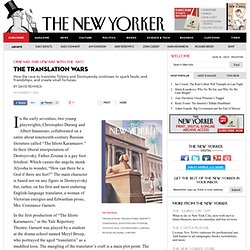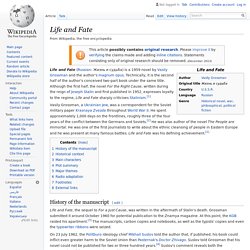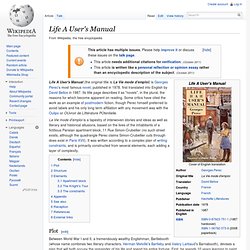

Onward and Upward With the Arts: The Translation Wars. In the early seventies, two young playwrights, Christopher Durang and Albert Innaurato, collaborated on a satire about nineteenth-century Russian literature called “The Idiots Karamazov.”

In their liberal interpretation of Dostoyevsky, Father Zosima is a gay foot fetishist. Which causes the angelic monk Alyosha to wonder, “How can there be a God if there are feet?” The main character is based not on any figure in Dostoyevsky but, rather, on his first and most enduring English-language translator, a woman of Victorian energies and Edwardian prose, Mrs. Constance Garnett. In the first production of “The Idiots Karamazov,” at the Yale Repertory Theatre, Garnett was played by a student at the drama school named Meryl Streep, who portrayed the aged “translatrix” as a muddled loon. Poor Mrs. Without translators, we are left adrift on our various linguistic ice floes, only faintly hearing rumors of masterpieces elsewhere at sea.
Garnett (1862-1946) was one of eight children. Life and Fate. Life and Fate (Russian: Жизнь и судьба) is a 1959 novel by Vasily Grossman and the author's magnum opus.

Technically, it is the second half of the author's conceived two-part book under the same title. Although the first half, the novel For the Right Cause, written during the reign of Joseph Stalin and first published in 1952, expresses loyalty to the regime, Life and Fate sharply criticises Stalinism.[1] Vasily Grossman, a Ukrainian Jew, was a correspondent for the Soviet military paper Krasnaya Zvezda throughout World War II. He spent approximately 1,000 days on the frontlines, roughly three of the four years of the conflict between the Germans and Soviets.[2] He was also author of the novel The People are Immortal. He was one of the first journalists to write about the ethnic cleansing of people in Eastern Europe and he was present at many famous battles. Jean Giraud. Early life[edit] Jean Giraud was born in Nogent-sur-Marne, Val-de-Marne, in the suburbs of Paris, on 8 May 1938.[5][6] When he was three years old, his parents divorced and he was raised mainly by his grandparents.

The rupture between mother and father, city and country, created a lasting trauma that he explained lay at the heart of his choice of separate pen names.[7] In 1955 at age 16, he began his only technical training at the Arts Appliqués art school, where he started producing Western comics. He became close friends with another comic artist Jean-Claude Mézières. In 1956 he left art school to visit his mother in Mexico and he stayed there eight months, after which he returned to work full-time as an artist.[8] In 1959–1960 he served his military service in Algeria, where he collaborated on the army magazine 5/5 Forces Françaises.[9] Career[edit] Western comics[edit] A panel from Giraud's 1958 Western comic "King of the Buffalo", written by Noel Carre. Marvel Comics[edit] Films[edit] Life: A User's Manual. Life A User's Manual (the original title is La Vie mode d'emploi) is Georges Perec's most famous novel, published in 1978, first translated into English by David Bellos in 1987.

Its title page describes it as "novels", in the plural, the reasons for which become apparent on reading. Some critics have cited the work as an example of postmodern fiction, though Perec himself preferred to avoid labels and his only long term affiliation with any movement was with the Oulipo or OUvroir de LIttérature POtentielle. La Vie mode d'emploi is a tapestry of interwoven stories and ideas as well as literary and historical allusions, based on the lives of the inhabitants of a fictitious Parisian apartment block, 11 Rue Simon-Crubellier (no such street exists, although the quadrangle Perec claims Simon-Crubellier cuts through does exist in Paris XVII).
It was written according to a complex plan of writing constraints, and is primarily constructed from several elements, each adding a layer of complexity. Welcome to the Polyglot Project.